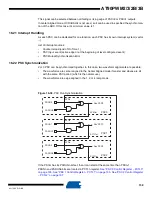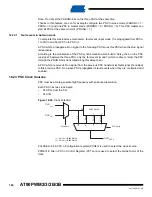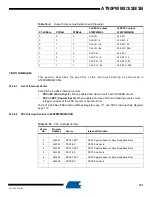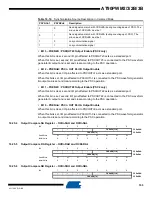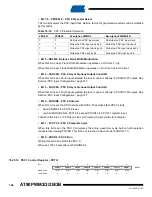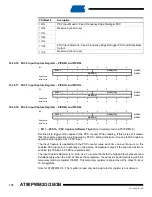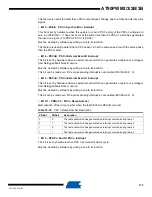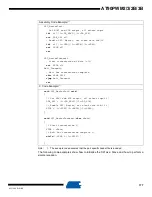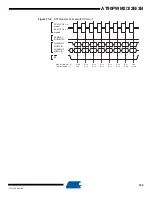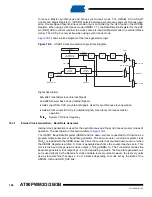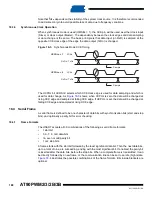
173
4317I–AVR–01/08
AT90PWM2/3/2B/3B
This feature is useful to detect that a PSC output doesn’t change due to a freezen external input
signal.
• Bit 5 – PSEIn : PSC n Synchro Error Interrupt
This bit is set by hardware when the update (or end of PSC cycle) of the PSCn configured in
auto run (PARUNn = 1) does not occur at the same time than the PSCn-1 which has generated
the input run signal. (For PSC0, PSCn-1 is PSC2).
Must be cleared by software by writing a one to its location.
This feature is useful to detect that a PSC doesn’t run at the same speed or with the same phase
than the PSC master.
• Bit 4 – PEVnB : PSC n External Event B Interrupt
This bit is set by hardware when an external event which can generates a capture or a retrigger
from Retrigger/Fault block B occurs.
Must be cleared by software by writing a one to its location.
This bit can be read even if the corresponding interrupt is not enabled (PEVEnB bit = 0).
• Bit 3 – PEVnA : PSC n External Event A Interrupt
This bit is set by hardware when an external event which can generates a capture or a retrigger
from Retrigger/Fault block A occurs.
Must be cleared by software by writing a one to its location.
This bit can be read even if the corresponding interrupt is not enabled (PEVEnA bit = 0).
• Bit 2:1 – PRNn1:0 : PSC n Ramp Number
Memorization of the ramp number when the last PEVnA or PEVnB occured.
• Bit 0 – PEOPn: End Of PSC n Interrupt
This bit is set by hardware when PSC n achieves its whole cycle.
Must be cleared by software by writing a one to its location.
Table 16-18. PSC n Ramp Number Description
PRNn1
PRNn0
Description
0
0
The last event which has generated an interrupt occured during ramp 1
0
1
The last event which has generated an interrupt occured during ramp 2
1
0
The last event which has generated an interrupt occured during ramp 3
1
1
The last event which has generated an interrupt occured during ramp 4

